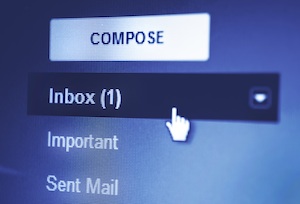 Email marketing is one of the best online marketing tools to promote your business and convert leads into customers.
Email marketing is one of the best online marketing tools to promote your business and convert leads into customers.
It informs your leads about new products, services, or offers that are relevant to their interests so that they can move into the next steps of the decision-making process.
The following are a dozen helpful tips to increase the value and effectiveness of your email marketing campaigns:
1) Segment B2B vs. B2C
When you target the right person, email marketing is more effective. B2B clients and B2C customers have different interests, goals, and decision-making methods, so it is important to segment email campaigns to appeal to their preferences.
2) Engage Your Prospects and Existing Customers
Since prospects have yet to make a purchase, they need to be educated on the reputation and value of your company, its products, and/or services. Existing customers already know who you are and what you do, so they want to be informed about new products and services, special offers, and exclusive information. Thus, you should tailor your emails to appeal to subscribers in the different stages the buying cycle.
3) Segment Based on Wants and Needs
Market segmentation enables you to identify and target customers using their unique needs, interests, and activities. When you understand your buyer personas, you can provide the right information to the right people at the right time.
4) Re-Engage Your Customers
Before cleaning your list or getting rid of inactive subscribers, try to engage them again. Some possible solutions to spark interest again are changing your email layout design, adjusting your editorial calendar to reach them on different days, or sharing better content. Even though these customers are temporarily inactive, they are still valuable to your business.
5) Utilize Analytics to Gauge Campaign Effectiveness
Be sure to have a marketing strategy in place when sending emails. It is important to have a goal in mind. For example, acquiring 100 new subscribers in 30 days is a tangible goal that be measured through tools such as Google Analytics or HubSpot.
Analytics Tools provides you with smart insights about your customers’ behavior and preferences by analyzing how often they open emails, click-through links, subscribe to newsletters, fill out forms, visit your website and make purchases. Using analytical data enables you to perfect your email marketing strategies.
6) Use Primary and Secondary CTAs
After subscribers read email content, they always want to know ‘what’s next’. Do not leave them wondering. Including a clear call to action can help turn a subscriber into a customer. Some examples include: Register for Monday’s Webinar, Download a Free Book, and Watch Today’s Video.
Make sure to keep them short, sweet and to the point. In addition to using CTA’s, smart forms help you continue to gather information and further segment your subscribers.
7) Understand and Emphasize a Problem
People are constantly searching for answers and solutions to their problems. If you provide your subscribers with relevant and valuable solution-oriented content, you instantly capture their attention and earn their trust. Lead nurturing enables you to convert your leads into customers by addressing their specific buyer problems.
8) Utilize Behavioral Triggers
Behavioral triggers are actions taken by online visitors that reveal a transition into a different stage of the decision-making process. If a lead has visited your website more than once but has not contacted you or moved forward with a purchase, something is holding him or her back.
That’s why it’s important to follow up with leads and keep your company top of mind. You can send them a thank you email for visiting your website, downloading an eBook, watching one of your webinars, or adding a product to their shopping cart. You can also send them an FAQ email, an email with existing customer testimonials, or an email with a link to another webpage or blog article that they may enjoy.
9) Personalize Email
When an email is addressed to the name of the customer or the name of the client company, the email has a much greater chance of being read by the recipient. Personalized emails show that you care about building close relationships with your customers, who are not just one number on a long contact list.
It often helps to personalize the sender’s name and include a picture of the sender at the bottom with their contact information (if appropriate). Personalization ultimately increases lead conversion and sales generation.
10) Integrate With Social Media
Social media integration amplifies your email campaigns across many platforms. It is relatively simple to incorporate social media sharing icons or links within your email campaign. Your email recipients will be able spread your content to their social media channels and anyone within their network. This extends the reach of your email far beyond just your email contact list.
11) A/B Test Campaigns
A/B testing, or split testing, determines which email option is the most effective for your email campaign. By sending two email versions (A and B) to two different groups of recipients, you can measure the results of open rates and click through rates. A/B testing for email campaigns tests the success of different subject lines, email designs, offers or promotions, and email content before you send out the main email campaign.
12) Integrate a CRM
Integration enables you to maintain an integrated and updated list of contacts and leads. Automation with CRM or API enables you to plan email campaigns in advance, which saves you time and money. Using CRM or API software, you can create more relevant, targeted and automated email marketing campaigns.

